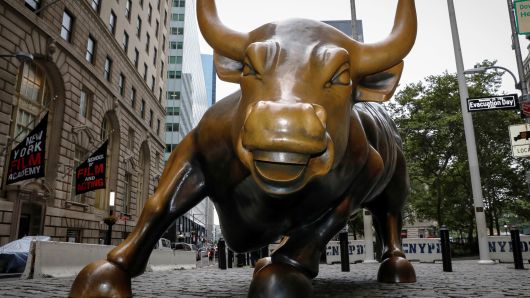
Increased market volatility this year has mostly prompted financial experts to repeat one piece of advice: Stay the course.
But as markets are poised for a continued bumpy ride, investors would be wise to keep another tip in mind: Diversify.
“Diversification works when you need it the most,” said Chris Hyzy, chief investment officer for Bank of America Global Wealth & Investment Management.
That comes as the Dow Jones Industrial Average sank more than 500 points on Tuesday, effectively erasing gains for the year. The S&P 500, meanwhile, fell 1.8 percent.
“Right now, we’re in a little bit of a hornet’s nest, where there’s a confluence of events that are causing some selling and repositioning to occur,” Hyzy said.
In order for investors on the sidelines to feel comfortable enough to ramp up their risk exposure, two things need to happen, according to Hyzy.
“What we need is the Fed to come out and be more balanced in their assessment, not only of the economy, but also their potential action regarding short-term interest rates,” Hyzy said. “And second, we need a resolution between the U.S. and China on a trade agreement.”
Strong corporate earnings in the fourth quarter and first quarter can also help the markets establish more solid footing, he said.
How to adjust
For now, investors may want to make sure their portfolios are prepared for a bumpy ride.
“It’s important to be more diversified in 2019 than you have been over the last few years,” Hyzy said.
If you’re overallocated to growth or momentum areas of the market, now could be the time to pull back on that exposure. Consider investing in companies that do not need financing or do not have a lot of debt, Hyzy said.
One buffer for your portfolio could be short-term fixed income, from three years to one year, where “the yields are much more attractive than the longer-dated yields,” Hyzy said.
You may also opt to reduce the effect volatility has on your portfolio by increasing your investments in alternatives or even cash, Hyzy said.
Scott Hanson, founder and senior partner at Hanson McClain Advisors, said he recommends investors consider index funds or exchange-traded funds instead of owning individual company stocks.
Also remember that the non-equity side of the portfolio is supposed to be an area where you take on less — not more — risk.
“Sometimes people end up having more risk in the fixed income portfolio than they realize because they’re chasing yield and end up with longer-term bonds or lower quality bonds,” Hanson said. “It’s not the place in your portfolio to take the risk.”
Instead, consider short-term bonds, treasury bills or savings accounts, where yields are higher now than they were a year or two ago, he said.
And above all, remember that investing is a long-term endeavor.
When Hanson was starting out in 1990, the Dow Jones Industrial Average was roughly 2,600, he said. Today, at more than 24,000 it’s increased almost ten-fold, even after the dot com bubble and the Great Recession.
“For those with a long-term time horizon, 10-plus years, it’s not going to make any difference in the long term,” Hanson said.
